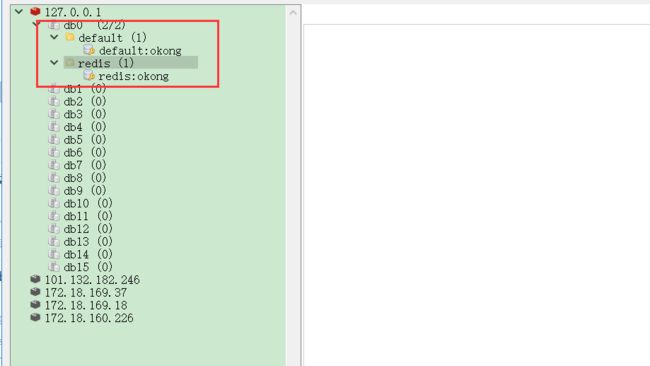前言
今天有网友咨询了一个问题:如何在一个工程中使用多种缓存进行差异化缓存,即实现多个
cacheManager灵活切换。原来没有遇见这种场景,今天下班抽空试了下,以下就把如何实现的简单记录下。
- 一点知识
- 关于CacheMananger
- 集成Redis和ehcache
- 参考资料
- 总结
- 最后
- 老生常谈
一点知识
在
SpringBoot中使用Spring Cache可以轻松实现缓存,是Spring框架提供的对缓存使用的抽象类,支持多种缓存,比如Redis、EHCache等,集成很方便。同时提供了多种注解来简化缓存的使用,可对方法进行缓存。具体如何集成,之前的文章已经有详细介绍了,感兴趣的同学可点击:SpringBoot | 第十一章:Redis的集成和简单使用。这里就不再阐述了,一下简单较少下cacheManager。
关于CacheMananger
针对不同的缓存技术,需要实现不同的cacheManager,Spring定义了如下的cacheManger实现。
| CacheManger | 描述 |
|---|---|
| SimpleCacheManager | 使用简单的Collection来存储缓存,主要用于测试 |
| ConcurrentMapCacheManager | 使用ConcurrentMap作为缓存技术(默认) |
| NoOpCacheManager | 测试用 |
| EhCacheCacheManager | 使用EhCache作为缓存技术,以前在hibernate的时候经常用 |
| GuavaCacheManager | 使用google guava的GuavaCache作为缓存技术 |
| HazelcastCacheManager | 使用Hazelcast作为缓存技术 |
| JCacheCacheManager | 使用JCache标准的实现作为缓存技术,如Apache Commons JCS |
| RedisCacheManager | 使用Redis作为缓存技术 |
常规的SpringBoot已经为我们自动配置了EhCache、Collection、Guava、ConcurrentMap等缓存,默认使用ConcurrentMapCacheManager。SpringBoot的application.properties配置文件,使用spring.cache前缀的属性进行配置。
application配置
spring.cache.type=#缓存的技术类型
spring.cache.cache-names=应用程序启动创建缓存的名称
spring.cache.ehcache.config=ehcache的配置文件位置
spring.cache.infinispan.config=infinispan的配置文件位置
spring.cache.jcache.config=jcache配置文件位置
spring.cache.jcache.provider=当多个jcache实现类时,指定选择jcache的实现类
这里为了演示多cacheManager实现,这里使用redis和ehcache进行集成。
集成Redis和ehcache
0.pom文件依赖
org.springframework.boot
spring-boot-starter-data-redis
net.sf.ehcache
ehcache
1.创建配置类。
CacheConfig.java
/**
*
* @ClassName 类名:CacheConfig
* @Description 功能说明:缓存配置类
*
* TODO
*
************************************************************************
* @date 创建日期:2019年3月7日
* @author 创建人:oKong
* @version 版本号:V1.0
*
***************************修订记录*************************************
*
* 2019年3月7日 oKong 创建该类功能。
*
***********************************************************************
*
*/
@Configuration
@EnableCaching
public class CacheConfig {
/**
* cacheManager名称
*/
public interface CacheManagerName {
/**
* redis
*/
String REDIS_CACHE_MANAGER = "redisCacheManager";
/**
* ehCache
*/
String EHCACHE_CACHE_MAANGER = "ehCacheCacheManager";
}
/**
* 定义 StringRedisTemplate ,指定序列号和反序列化的处理类
* @param factory
* @return
*/
@Bean
public RedisTemplate redisTemplate(RedisConnectionFactory factory) {
StringRedisTemplate template = new StringRedisTemplate(factory);
Jackson2JsonRedisSerializer 注:其实就是配置多个cacheManager。但这里需要注意,要设置一个默认的cacheManager,即注解在未设置cacheManager时,自动使用此缓存管理类进行缓存,同时,因为注入了多个cacheManaager,需要在默认的管理器方法上加上@Primary注解。不然,会出现一下异常:
No CacheResolver specified, and no unique bean of type CacheManager found. Mark one as primary (or give it the name 'cacheManager') or declare a specific CacheManager to use, that serves as the default one.
至于原因。可以查看以下代码:
其实就是配置了多个bean,抛出了一个NoUniqueBeanDefinitionException异常。其实就是未指定一个默认的cacheManager,所以加上@Primary即可。
@Primary 优先考虑,优先考虑被注解的对象注入
2.编写测试类,默认是使用redis缓存,若想指定缓存,只需要设置cacheManager的值即可。
/**
*
* @ClassName 类名:DemoController
* @Description 功能说明:
*
* TODO
*
************************************************************************
* @date 创建日期:2019年3月7日
* @author 创建人:oKong
* @version 版本号:V1.0
*
***************************修订记录*************************************
*
* 2019年3月7日 oKong 创建该类功能。
*
***********************************************************************
*
*/
@RestController
@Slf4j
public class DemoController {
@RequestMapping("/redis/{key}")
@Cacheable(value = "redis",key="#key",cacheManager=CacheConfig.CacheManagerName.REDIS_CACHE_MANAGER)
public String cacheRedisTest(@PathVariable("key") String key) {
log.info("redis,key={}", key);
return key;
}
@RequestMapping("/ehcache/{key}")
@Cacheable(value = "oKongCache",key="#key",cacheManager=CacheConfig.CacheManagerName.EHCACHE_CACHE_MAANGER)
public String cacheEhcacheTest(@PathVariable("key") String key) {
log.info("ehcache,key={}", key);
return key;
}
@RequestMapping("/default/{key}")
@Cacheable(value = "default",key="#key")
public String cacheDefaultTest(@PathVariable("key") String key) {
log.info("default,key={}", key);
return key;
}
}
3.配置application文件,加入相关配置。
# REDIS (RedisProperties)
# Redis数据库索引(默认为0)
spring.redis.database=0
# Redis服务器地址
spring.redis.host=127.0.0.1
# Redis服务器连接端口
spring.redis.port=6379
# Redis服务器连接密码(默认为空)
spring.redis.password=
# 连接池最大连接数(使用负值表示没有限制)
spring.redis.pool.max-active=8
# 连接池最大阻塞等待时间(使用负值表示没有限制)
spring.redis.pool.max-wait=-1
# 连接池中的最大空闲连接
spring.redis.pool.max-idle=8
# 连接池中的最小空闲连接
spring.redis.pool.min-idle=0
# 连接超时时间(毫秒)
spring.redis.timeout=0
# ehcache配置地址
spring.cache.ehcache.config=ehcache.xml
配置ehcache.xml文件,设置cacheName。
关于其属性参数,大家可自行百度下,使用的不多呀,(┬_┬)
4.启动应用。
依次访问:
- http://127.0.0.1:8080/redis/okong
- http://127.0.0.1:8080/ehcache/okong
- http://127.0.0.1:8080/default/okong
可以看看redis中已经存在相关记录了
之后多访问几次,查看控制台,是没有输出的。
参考资料
- https://docs.spring.io/spring-boot/docs/1.5.15.RELEASE/reference/htmlsingle/#boot-features-caching-provider
总结
本章节主要介绍了多
cacheManager的灵活切换,以便实现更加灵活的缓存使用,可以根据具体的业务需求,进行差异化操作。关于ehcache的使用,现在用的不多了,所以相关配置参数,可以自行搜索下了。
最后
目前互联网上很多大佬都有
SpringBoot系列教程,如有雷同,请多多包涵了。原创不易,码字不易,还希望大家多多支持。若文中有所错误之处,还望提出,谢谢。
老生常谈
- 个人QQ:
499452441 - 微信公众号:
lqdevOps
个人博客:http://blog.lqdev.cn
完整示例:https://github.com/xie19900123/spring-boot-learning/tree/master/chapter-36
原文地址:https://blog.lqdev.cn/2019/03/08/springboot/chapter-thirty-six/




